The 2022 FIFA World Cup is upon us. Despite the surrounding controversy in Qatar, 32 teams will compete for global glory in matches scheduled to run through December 18. Because of the Middle Eastern locale’s intense heat, this is the first time that the World Cup will unfold so late in the year.
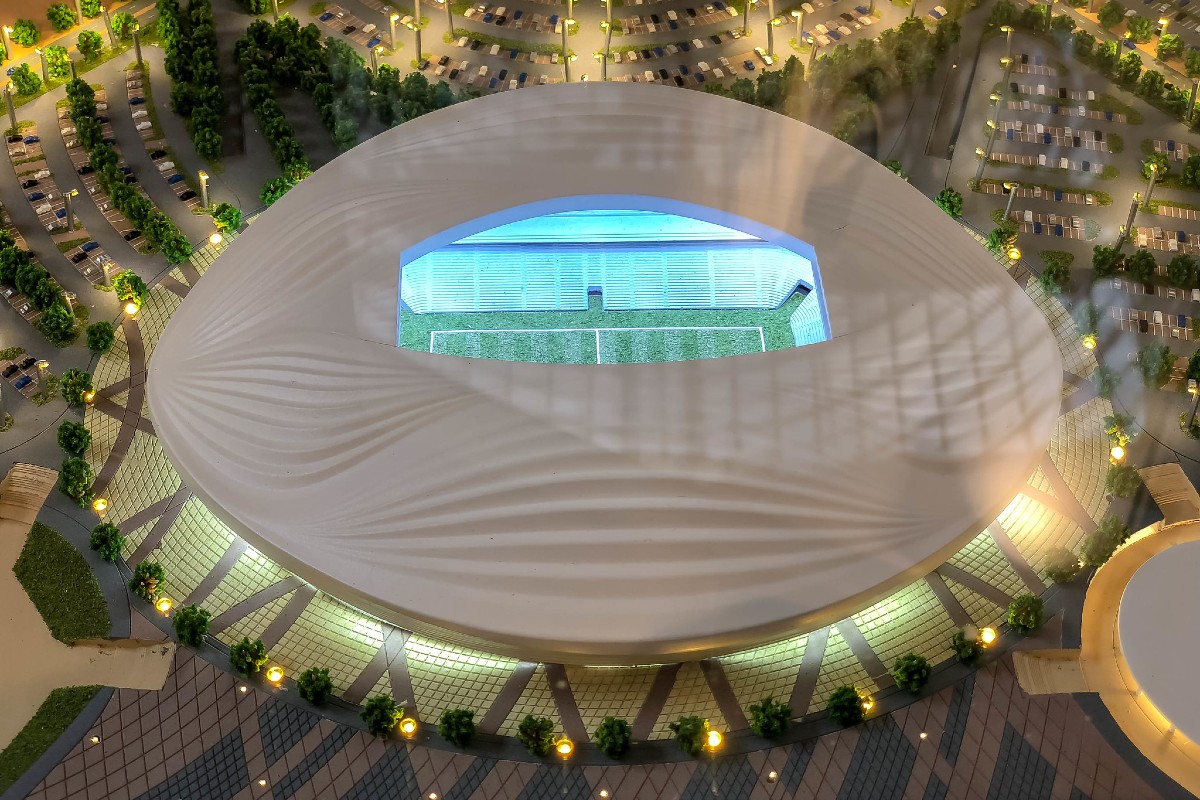
There are a few questions on everyone’s minds. First, how many stadiums are in the Qatar World Cup? In order to house fans and host the 64 matches, Qatar employed (as well as reportedly jailed and deported, according to CNN) thousands of workers and innovative engineers to envision and construct seven new stadiums and renovate another. How much money did Qatar spend on the World Cup? Our best guess is about $3.3 billion, with some numbers unavailable and variable (per The Sporting News).
The eight stadiums are some of the most accessible in World Cup history, all located within about 20 miles of Qatar’s capital city of Doha; Al Bayt Stadium is the farthest away at 22 miles north of the capital, on the edge of the desert, according to The L.A. Times). Each venue is meant to reflect the unique character of Arabic architecture as well as to point toward a sustainable future in appearance and use. Buildings were assembled to house fans and serve a new purpose at the end of the sporting event. More than 170,000 total seats are set to be detached and donated to developing nations after the tournament.
Here, The Manual digs into the details and plans for the eight Qatari venues hosting the 2022 World Cup games.
Al Bayt

The World Cup kicked off on November 20 in Al Bayt stadium, which, per FIFA, is a short-form version of the Arabic “bayt al sha’ar” – the traditional tents used by the area’s nomadic desert peoples. The stadium is intended to resemble these dwellings. Popular Mechanics states that the top of Al Bayt is made from a retractable “PTFE (polytetrafluoroethylene) woven fiberglass membrane” that helps keep the stadium cool.
This nod to legacy goes forwards as well as backwards; after this year’s events, Qatar’s Ministry of Culture and Sport will pass on this cultural heritage to the country’s youth by opening the stadium for public use and a number of organized recreational activities. This will include camel and horse riding, play areas, and exercise stations amidst the massive green space that spreads over 30 football pitches. Qatar will also downsize the 60,000-seat Al-Bayt to 40,000 seats, with the upper tier being removed and seats going to several developing nations.
Lusail Stadium

Though the tournament began at Al Bayt, it will wrap at Lusail Stadium, the “largest and newest stadium” in the World Cup (per The L.A. Times). Seating 80,000 people, Lusail’s design is inspired by the light and shadow of the rising light and falling shadow of the “fanar” lamp. “Fanar” is Arabic for “lantern,” though this was a candle instead of an oil lamp. Lusail’s facade is faced with triangular panels upon a steel frame. Additional ornamentation is meant to resemble the art found on local bowls.
The PTFE roof is constructed of fiberglass fabric to let in light and retain the air conditioning while keeping out the surrounding wind and sand. Qatar’s post-tournament plans for Lusail include affordable housing on the top tier, commercial shops, grocery stores, health clinics, and perhaps even a school.
Ahmad bin Ali

This stadium is located in Umm Al Afaei, a historic Qatari city on the desert’s border (per Qatar’s World Cup homepage). Qatar’s World Cup page describes Ahmad bin Ali as reflecting its sandy environs with an undulating, sand dune-esque false front that sports “intricate geometric patterns.” The design is supposed to mirror the desert’s barren beauty, native flora and fauna, and the commercial trade taking place there.
Qatar claims that more than 80% of the stadium’s building materials were reused from the original arena that occupied the setting while retaining its decorative trees and natural landscape. Per Popular Mechanics, 20,000 of Ahmad bin Ali’s 40,000 seats will be removed and repurposed following the World Cup while the remaining space will host a local soccer squad.
Education City Stadium
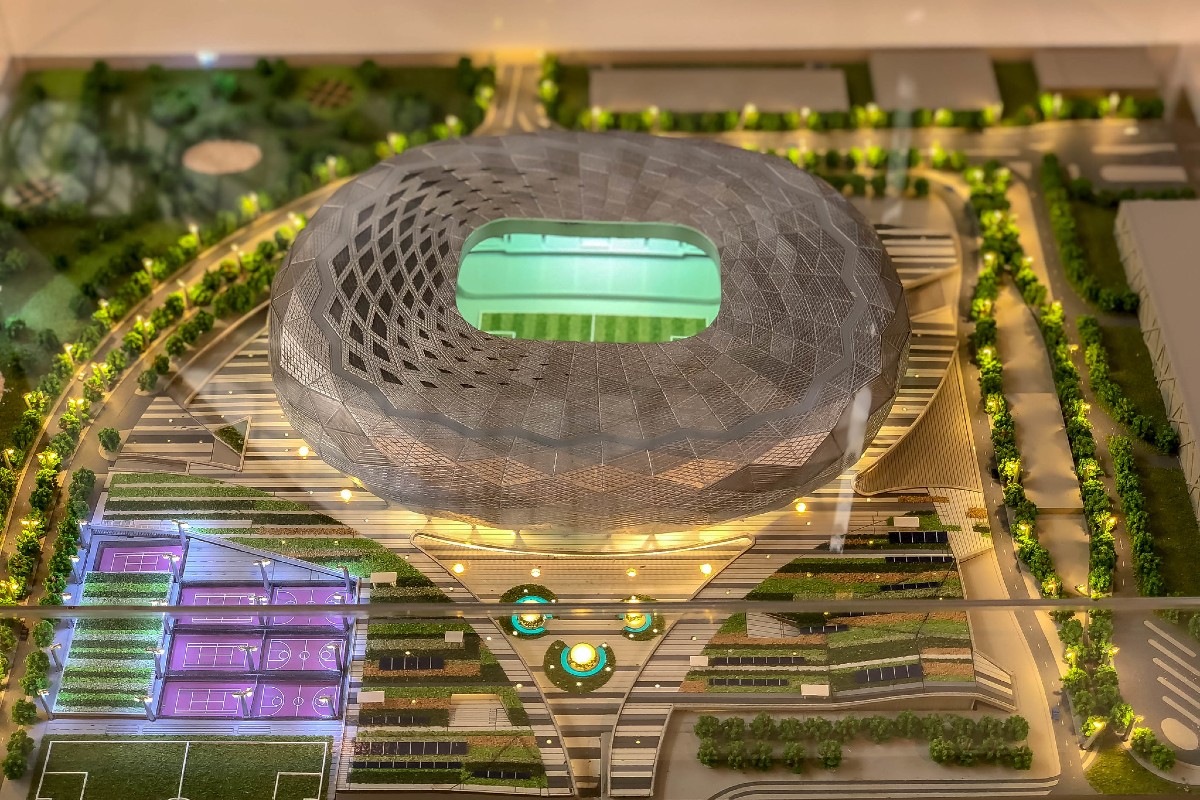
According to FIFA, the 45,000-seat Education City Stadium sports a triangular fascia coming together in a complex, diamond-like geometrical design that changes tone with the sun’s arc across the Arabic sky. This mineral brilliance symbolizes “quality, durability and resilience” — a treasure for fans, the tournament’s legacy, and the sustainable future of Qatar.
FIFA asserts that Education City Stadium is the first Qatari tournament venue to achieve a five-star build rating via the Global Sustainability Assessment System. After its modular upper tier is removed after the World Cup, the site will be donated to local students and faculty to lift up the nation’s athletic infrastructure.
Al Thumama
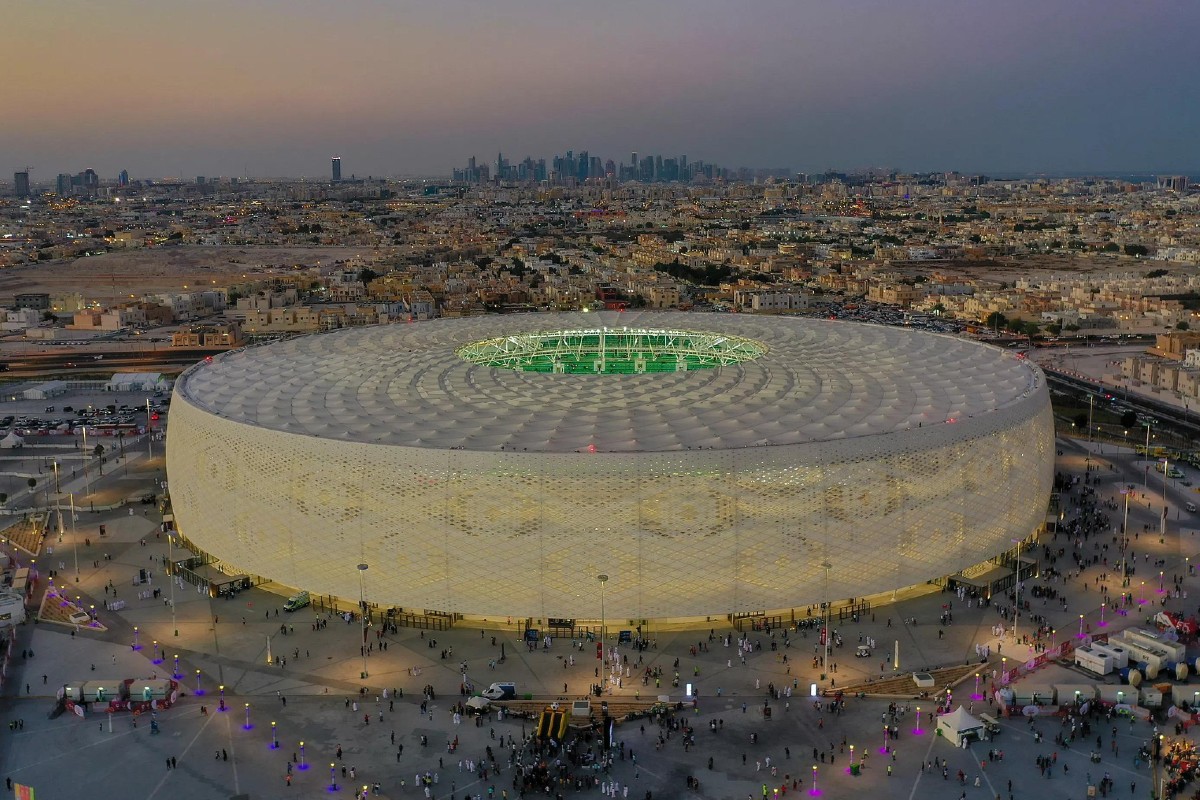
Welcoming visitors arriving from the nearby Doha International Airport, the 40,000-seat Al Thumama represents and looks like a traditional “taqiyah” — a skull cap worn in honor of Muhammed, Islam’s primary prophet. The woven cap is meant to protect the head’s contents — the seat of Muslim religious beliefs. The headwear also protects against the beating desert sun. Designing the stadium with a skull cap motif is a symbol of the cool interior of Al Thumama, which is similarly protected from the intense sun and heat.
After the World Cup, Qatar plans to replace the stadium’s top stands with a boutique hotel overlooking the field. Outside, according to the L.A. Times, a 12-square-acre park is planned for the public to enjoy. Notably, the U.S. team matchup against Iran was at Al Thumama is its final group-play contest.
Stadium 974
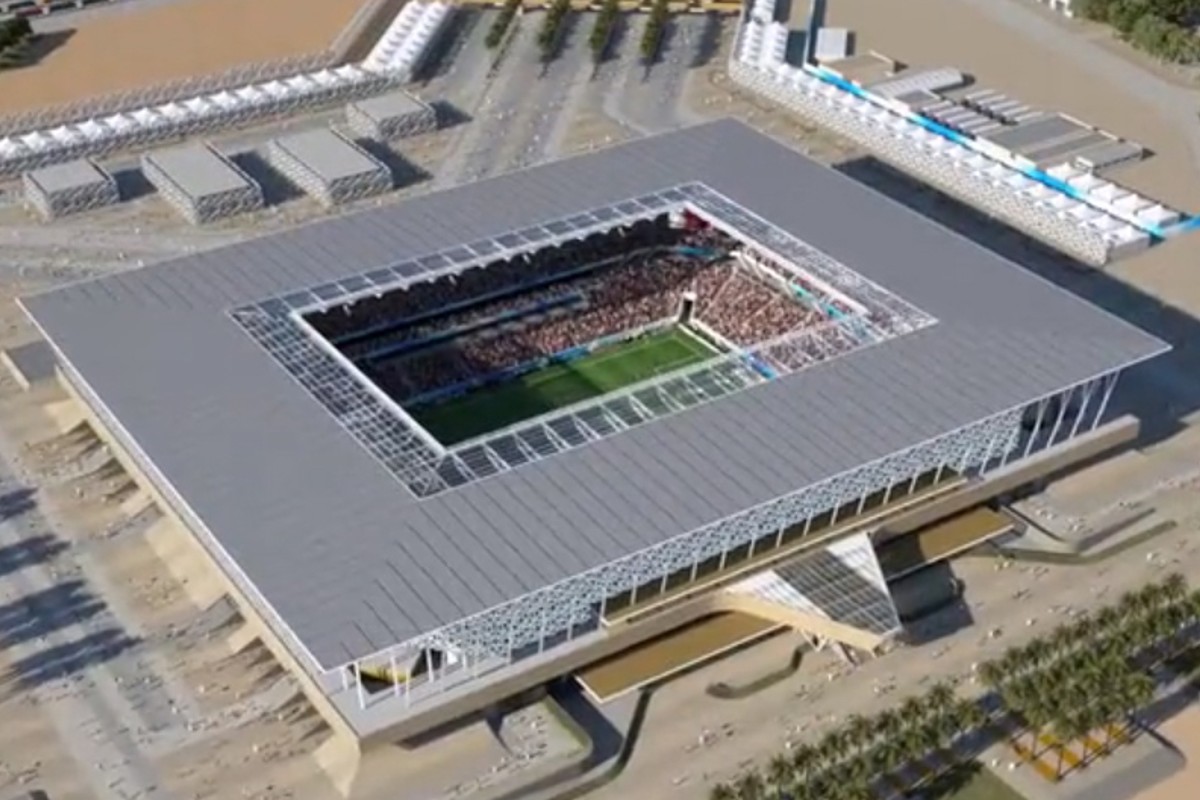
Stadium 974 is funky fresh. An ode to Qatar’s life as a sea trade hub, given the city is surrounded by the Persian Gulf, Stadium 974 is constructed from 974 shipping containers connected by modular steel. 974 is also the region’s international dialing code, per Popular Mechanics.
The standard freight containers come together in a panoply of colors that are accompanied by a multi-hued inside — seats, concessions areas, and stairs. In addition, the cargo boxes are a nod to the rigging, gear, and building materials brought in to construct the venues hosting the World Cup. Stadium 974 is also naturally green; located in a wind-blown locale, it is cooled by the open air instead of AC.
After the international tournament, the 40,000-seat arena will be completely deconstructed, making it the first World Cup Stadium to ever live life solely as a temporary structure.
Khalifa International Stadium
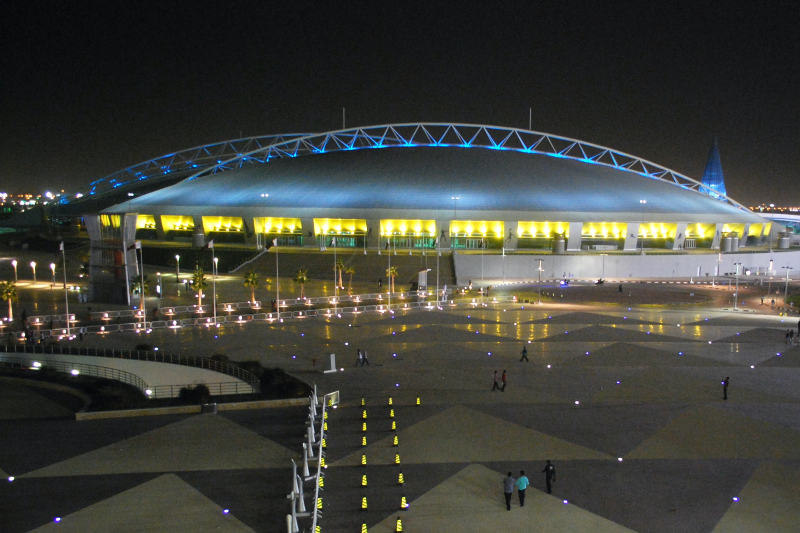
Khalifa International Stadium is the only arena not constructed for the World Cup. Instead, according to FIFA, the building was renovated with a new tier so that it could surpass a 45,000-guest capacity. Khalifa’s iconic dual arches remained during redevelopment and are now complemented by a canopy billowing beneath the bows that partially encloses a new cooling system. A brand new LED lighting system insides gives fans a better view of the action. Khalifa — which, according to Encyclopedia Britannica, means the leader of an Islamic caliphate (community or kingdom) — will remain as the crown jewel of the Qatari athletic community after the 2022 World Cup.
Editors' Recommendations
- Everything we know about Netflix’s Ripley miniseries
- Everything we know about Kevin Costner’s Horizon, the 4-film series that should please Yellowstone fans
- Everything we know about Shōgun, FX’s upcoming historical drama series with a perfect Rotten Tomatoes score
- Everything we know about Ghostbusters: Frozen Empire
- Yellowstone season 6: Everything we know about whether it’ll happen



